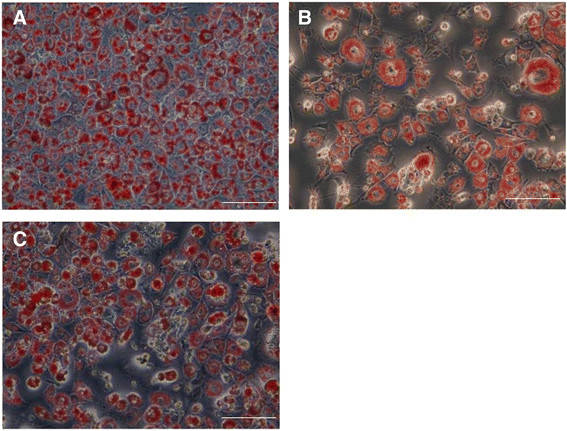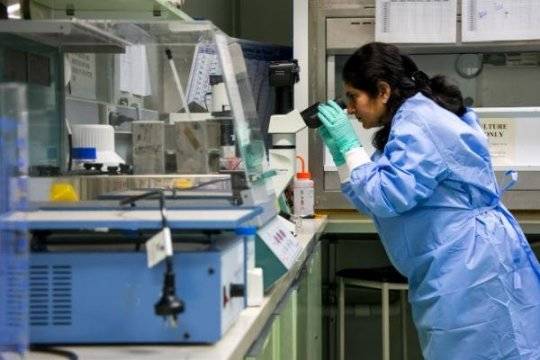당뇨병은 전세계적으로 가장 빠르게 증가하는 대사 질환이며, 암은 전세계적으로 가장 많은 사람들의 목숨을 위협하는 대표적인 질환이다. 이번에 ‘BMC Complementary & Alternative Medicine’에 발표된 논문에서는 호주 및 인도의 토착 약용 식물들에서 추출한 물질들이 당뇨병을 관리할 수 있을 뿐만 아니라 암 치료에도 유망한 효과가 있음을 보여주고 있다. 호주 Swinburne 기술 대학이 발표한 이번 결과에 따르면 2형 당뇨병을 관리하는데 효과적이고 비만, 고혈압, 면역 억제와 같은 관련 증상에도 적용할 수 있는 식물 종들을 찾았다고 한다.
식물은 여러 종류의 약물의 주요 공급원 역할을 수행한다. 특히 1950년대부터 식물에서 항암제를 포함하여 여러 효과를 갖는 약물을 찾는 연구들이 시작되었다. 그 결과로 일일초(Vinca rosea)로부터 빈브라스틴(vinblastine)과 빈크리스틴(vincristine)과 같은 알카로이드(alkaloid)와 포도필룸(Podophyllum)에서 포도필로톡신(podophyllotoxins)과 같은 세포독성 물질을 찾는 초기의 성공을 거두었다. 또한 식물에 존재하는 여러 물질들은 프리 라디칼(free radical)로 알려져 있는 활성 산소종(reactive oxygen species)에 의해서 유발되는 손상으로부터 세포를 보호하는 항산화 효과를 갖는 것으로 알려져 있다. 뿐만 아니라 여러 식물 유래 물질들이 다양한 방식으로 암이나 대사 질환을 줄여주는 것으로 역학 조사에서 확인되어 있다. 때문에 이들 식물로부터 생리 활성 물질을 찾는 연구들이 지속되고 있다.
Vandana Gulati 박사가 주도한 이번 연구에서는 7종의 호주의 토착 약용 식물과 5종의 인도의 토착 약용 식물을 대상으로 항 당뇨 효과가 있는지를 확인했다. 그녀는 이들 12종의 약용 식물을 에탄올로 추출하여 이용했다. 이들 추출물은 3T3-L1 세포를 지방세포로 분화시키는지, 지방 조직의 당 섭취에 어떤 영향을 끼치는지 및 세포 내 지방의 축적에 어떤 영향을 주는지가 시험되었다. 또한 그녀는 이들 약용 식물의 추출물을 2종의 암세포주(A546-폐암, HeLa-자궁암)를 대상으로 항암 효과가 시험되었으며, 정상세포 2종(MDCK-상피세포, 3T3-L1-지방세포 전구체)에 대한 독성도 평가했다고 한다.
Gulati 박사는 “우리는 일부 식물 추출물이 지방 세포에서 당 섭취를 촉진시키는 반면에 다른 식물 추출물을 당 축적을 줄이는 것을 목격했다”고 설명했다. 호주의 토착 약용 식물 중에서 지방 세포에서 당 섭취를 촉진시킨 것은 Witchetty Bush(Acacia kempeana)와 Australian sandalwood(Santalum spicatum)의 추출물이었으며, 지방 세포에서 당 축적을 현저히 줄인 것은 Dead finish(Acacia tetragonophylla), Turpentine bush(Beyeria Ieshnaultii), Caustic weed (Euphorbia drumondii)의 추출물이었다. 인도의 토착 약용 식물 중에서 당 섭취를 촉진시킨 것은 Kali musli (Curculigo orchioides) 추출물이었으며, 지방 세포에서 당 축적을 현저히 줄인 것은 Vijayasar (Pterocarpus marsupium), Kalmeigh (Andrographis paniculata) 추출물이었다. Dead finish와 Kali musli는 3T3-L1을 지방 세포로 분화시키는 유도 효과가 뛰어난 것으로 나타났다.
미국립 암연구소에 기준에 따르면 천연물 추출물의 IC50수치(50% 저해 농도)가 30 μg/ml 이하이면 시험된 암세포에 대하여 항암 효과가 있는 것으로 인정된다고 한다. 이번에 시험된 7종의 호주 토착 약용 식물 추출물 중에서 Witchetty Bush와 Dead finish가 각각 HeLa 세포에 대하여 13.73 ± 1.51 μg/ml과 27.00 ± 14.28 μg/ml의 IC50 수치를 기록했다. 그러나 인도 토착 약용 식물 추출물들은 암세포에 대하여 유망한 효과를 입증하지 못했다. 반면 이들 물질들은 모두 정상세포 2종에 대한 IC50 수치가 158~563 μg/ml으로 나타나서 세포 독성은 높지 않음이 확인되었다.
지난 2012년에 동대학 연구팀이 발표한 논문에서 이들 추출물 중 일부가 혈당과 당뇨병에 영향을 주는 탄수화물 대사에 핵심적인 2종의 효소의 활성을 낮추는 것으로 보고되었다. 또한 이들 추출물 중 일부는 항산화 효과가 확인되었다. 이번 연구의 책임자로서 동대학 화학 및 생명공학과 학과장인 Enzo Palombo 박사는 “호주의 토착 약용 식물은 아직 개발되지 않은 자원들로서 여러 질병 치료에 대한 효과를 탐구할 필요가 있다.”라고 설명했다. 그는 앞으로 동물 시험과 최종적으로 사람을 대상으로 하는 임상 시험이 필요하다고 지적했다.
Journal Reference: Vandana Gulati, Pankaj Gulati, Ian H Harding, Enzo A Palombo. Exploring the anti-diabetic potential of Australian Aboriginal and Indian Ayurvedic plant extracts using cell-based assays. BMC Complementary and Alternative Medicine, 2015; 15 (1) DOI: 10.1186/s12906-015-0524-8
Plant extracts offer hope against diabetes, cancer
Date: May 25, 2015
Source: Swinburne University of Technology
Summary: Diabetes is the fastest growing metabolic disease in the world. A new study has shown that traditional Aboriginal and Indian plant extracts could be used to manage the disease and may also have potential use in cancer treatment.
Diabetes is the fastest growing metabolic disease in the world. A new study has shown that traditional Aboriginal and Indian plant extracts could be used to manage the disease and may also have potential use in cancer treatment.
Researchers from Swinburne University of Technology identified plant species that could potentially be applied in the management of type 2 diabetes and related complications of weight gain, hypertension and immune suppression.
As part of her PhD research, Dr Vandana Gulati studied seven Australian Aboriginal medicinal plants and five Indian Ayurvedic plants to determine their anti-diabetic potential.
She investigated the 12 medicinal plant extracts for their effect on glucose uptake and adipogenesis - the formation of fatty tissue. She also investigated the potential anti-cancer activity of the extracts in two cancerous cell lines.
"We found that some of the plant extracts stimulated glucose uptake in fat cells while others reduced fat accumulation in fat cells," Dr Gulati said.
Of the traditional Aboriginal plant extracts tested, Witchetty Bush (Acacia kempeana) and Australian sandalwood (Santalum spicatum) both stimulated glucose uptake and Dead finish (Acacia tetragonophylla), Turpentine bush (Beyeria Ieshnaultii) and Caustic weed (Euphorbia drumondii) significantly reduced fat accumulation in fat cells.
Among the Indian Ayurvedic plant extracts, Kali musli (Curculigo orchioides) stimulated glucose uptake as well as reduced fat accumulation. Vijayasar (Pterocarpus marsupium), and Kalmeigh (Andrographis paniculata) reduced accumulation in fat cells.
Furthermore, extracts of Witchetty bush and Dead finish also showed strong activity against cervical cancer cells.
A 2012 Swinburne study looked at how some of these extracts slow down two key enzymes in carbohydrate metabolism which affect blood sugar and diabetes and also found they had an antioxidant effect.
"Australian medicinal plants are an untapped source and should be further explored as potential treatments for disease," Chair of Swinburne's Department of Chemistry and Biotechnology, Professor Enzo Palombo, said.
Professor Palombo said studies in animals and, eventually, humans are required to take this research further.
This research was published in BMC Complementary & Alternative Medicine.





